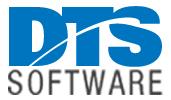The mainframe is dead. The mainframe is alive and well. The mainframe is dying. The mainframe market is growing at a rate of nearly 4.5% a year and should continue at that pace for the next several years at least. The simple truth is the mainframe isn’t going anywhere any time soon. With the introduction of IBM’s new z16 product, that’s a truth you can bank on.
But with the z16 comes a new set of challenges for system administrators and programmers alike. The ever-increasing processing power of mainframe systems, along with the consolidation of applications onto fewer, smaller mainframes drives a need to use disk space more efficiently and reduce errors. Why? The mainframe is still the most strategic IT asset in the world. And because disk space is cheap per byte but expensive in the aggregate.
Space Recovery System (SRS) From DTS
Never has a product like SRS been more integral to a mainframe software stack. Then again, we could’ve said that 25 years ago and been spot-on. In a nutshell, (SRS) helps eliminate production failures that occur when the available disk storage can’t meet application requirements.
SRS is Always On!
SRS is always working to eliminate out-of-space errors and subsequent reruns (and the high cost associated with them), whether DB2, VSAM, non-VSAM, SMS-managed, disk, tape, or virtual tape. And by improving throughput, SRS eliminates the need for costly production restarts and reruns, especially during peak workloads.
SRS also reduces the potential for human error by removing the need to manually identify problems and find free disk space. It can even allow you to postpone the purchase of additional DASD by providing the highest rates of disk space utilization.
SRS Automated Recovery Capabilities
SRS performs recovery for datasets regardless of whether they are VSAM or non-VSAM, SMS managed or not, and whether they are destined for a specific volume or a group of volumes. SRS’ mature technology ensures that all possible means of recovery are attempted. For example, multiple retries of primary and secondary space amount values can be performed, rather than just a single fixed-value retry.
SRS will even reduce the requested space to fit within the 4GB limit for non-extended format VSAM files, ensuring you get the full amount of space available. It also eliminates the need for “guaranteed space” and prevents the splitting of primary space across multiple volumes.
Checks and Balances
SRS offers a detailed audit report, which can include user-defined information. The user is offered options and can see summary or detail information in a user-friendly format. Additionally, SRS offers a sophisticated, comprehensive TRACE facility, which makes debugging your rules a snap.
There is also the ability to syntax-check your rules prior to implementation. This is a great option when changes to the rules are made in the morning but will be implemented by non-technical personnel later during the production schedule.
Combatting “New User” Mistakes
As the next generation of mainframers emerges, limited “new user” understanding of dataset space utilization issues, such as how primary and secondary space is obtained, and architectural limits such as extent constraints, is a potentially costly challenge. With SRS, problem solved. The work is done automatically and with unmatched accuracy. Similarly, since many requests are performed automatically by applications, z/OS’ limited ability for users to adjust requested space amounts is a non-issue.
Support From the Original Author Lineage
SRS is supported and actively developed and enhanced by the original authors. It is supported by some of the most experienced storage management professionals in the business. Our support staff members each have decades of experience and expertise in helping customers navigate their way through automated storage management, so when you have an issue, your problem is solved in hours, not days.
Want to Know More About SRS
Visit https://www.dtssoftware.com/products/srs for a complete look, including datasheet, webinars, and customer testimonials.


